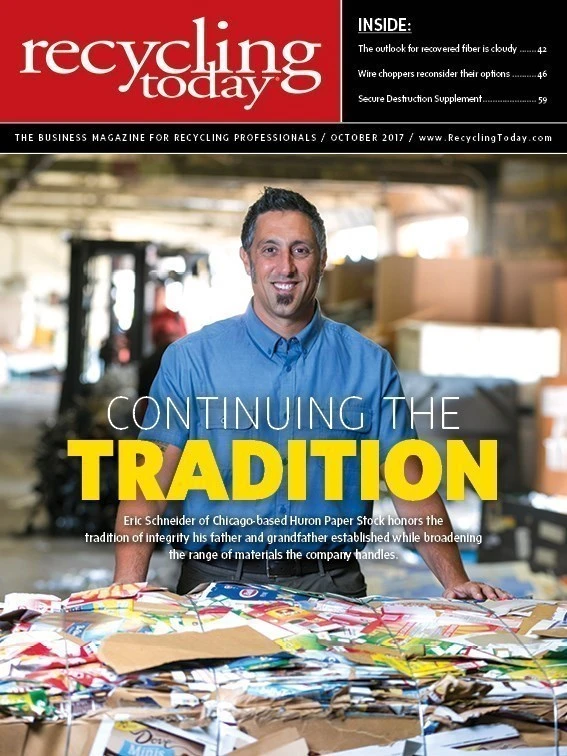
In addition to smaller quantities of recyclables, public space recycling programs face unique challenges that can result in lower participation, higher contamination
As curbside and other recycling programs reach maturity, however, many local governments and other institutions are looking for new sources of recoverable material to further increase their diversion rates. Public spaces are increasingly seen as one of the more promising sources. Cities ranging from Miami and New York City to Des Moines, Iowa, and Tuscaloosa, Alabama, have been resolute in expanding recycling in their downtown areas. States like Vermont and Connecticut have enacted laws aimed directly, or in part, at mandating recycling in public spaces. And companies such as the concert promoter AEG and convenience store chain Sheetz have made concerted efforts to place recycling bins at their facilities nationwide.
In addition to an untapped source of materials, public space recycling offers other potential benefits. Recycling bins in downtowns and other prominent areas can reinforce the community’s values as an inviting, clean and environmentally conscious place to visit. It is also an opportunity to “market” recycling itself, reinforcing it as a “full-time” activity people should do throughout the day. To be successful, though, one must address the barriers that can hobble a program.
Tackling the economics
Like any infrastructure operation, public space recycling comes with a cost. Sturdy outdoor recycling bins can cost as much as $1,500 apiece, and automated, self-compacting units can cost more than $4,000. Matching recycling and trash containers throughout the downtown of a midsize city easily can cost more than $500,000 for installation alone. Collection and maintenance
While support from state governments or programs such as Keep America Beautiful’s public space recycling infrastructure grants can help, the heavy lifting to significantly grow public space recycling investment ultimately falls to local communities and facility owners.
Two ongoing projects illustrate strategies communities can follow to overcome this barrier. Baton Rouge Recreation and Parks Commission (BREC) is a local government agency that manages all parks located in Baton Rouge, Louisiana, and the surrounding parish. Since 2014, BREC has placed approximately 500 bins at nine of its facilities. It has taken an incremental approach, expanding to new locations each year with a goal of having
Working with the Massachusetts Bay Transportation Authority (MBTA), a partnership led by MassRecycle is placing recycling and waste bins with advertising boards that MassRecycle’s Executive Director Edward Hsieh estimates have an average market value as high as $47,000 per station. Having successfully piloted the program in six stations, Hsieh sees potential to cover both the capital and operating costs necessary to eventually expand recycling to all 113 stations in the MBTA.
Getting people to sort correctly
Low participation and contamination are equally significant barriers. Audits of public area recycling and trash bins in Washington,
In a national survey about consumer recycling beliefs and practices commissioned by Keep America Beautiful in 2016, 80 percent of the respondents said it was important to recycle in public spaces, and 34 percent indicating that it is difficult to do so. In their homes or offices,
Keeping this in mind, the appearance,

Academic research in recent decades has shown how design attributes such as color,
In Tuscaloosa, Alabama, the city successfully placed 50 recycling bins along its pedestrian Riverwalk and adjacent 7,400-seat Amphitheater in 2015 with support from the
“We make it an easy choice for them by ‘twinning the bin’ in all of our public spaces,” says Chambers. “The blue color of the bins and the holes on the side of the bins keep rainwater and large contaminants and garbage from being forced into the bins.” With similarly designed bins, BREC saw an average 9 percent contamination rate in its City-Brooks Community Park.
The length of time a program has been in operation also contributes to improved sorting practices, according to communities such as Charleston, South Carolina, and Des Moines, Iowa.
In Des Moines, which received a Coca-Cola/Keep America Beautiful Public Space Recycling Infrastructure Grant, waste audits conducted immediately after the introduction of streetscape recycling bins in its East Village neighborhood showed an 18 percent contamination rate. An audit six months later found contamination had dropped below 10 percent, suggesting familiarity with the bins was a factor in helping people sort correctly.
Pilot projects in the greater Vancouver area in 2014 and 2015 found that nonrecyclable paper was a major
While much effort has been made to document average generation and recovery rates, equipment needs, operational costs and other key metrics for residential curbside programs, few studies about public space recycling are available to guide public works or facility managers when improving existing programs or planning new ones.
Public space recycling programs often are developed through a trial-and-error process that starts with small pilots. Keep America Beautiful is working with Skumatz Economic Research Associates (SERA), Boulder, Colorado, on a study designed to document key benchmarking metrics for recycling at parks and other outdoor public areas based on a sampling from multiple locations.
Public space recycling benefits
For all the challenges, public space recycling also offers significant benefits. Though not generating the same tonnages as residential programs, public locations still offer meaningful recovery potential. A limited program like Tuscaloosa’s with just 60 bins overall generates approximately 23 tons annually, while BREC estimates it will collect 125 tons of recyclables in 2017.
Chambers says the Tuscaloosa Riverwalk recycling bins help to project an inviting image of the community in a high-profile area frequented by thousands of visitors daily. Community interest is an important factor motivating BREC’s investment.
Amanda Takacs, who coordinates the program out of BREC’s Special Facilities Department, says, “The residents of East Baton Rouge Parish have indicated that this is an important component of the recreation lifestyle they want us to provide.”
Recycling in public spaces presents very real challenges and warrants careful planning. The experience of these communities and many others, however, shows the investment can pay off.
Get curated news on YOUR industry.
Enter your email to receive our newsletters.

Explore the October 2017 Issue
Check out more from this issue and find your next story to read.
Latest from Recycling Today
- Cyclic Materials to build rare earth recycling facility in Mesa, Arizona
- Ecobat’s Seculene product earns recognition for flame-retardant properties
- IWS' newest MRF is part of its broader strategy to modernize waste management infrastructure
- PCA reports profitable Q1
- British Steel mill subject of UK government intervention
- NRC seeks speakers for October event
- LME identifies Hong Kong warehouses
- Greenville, Mississippi, launches aluminum can recycling program






